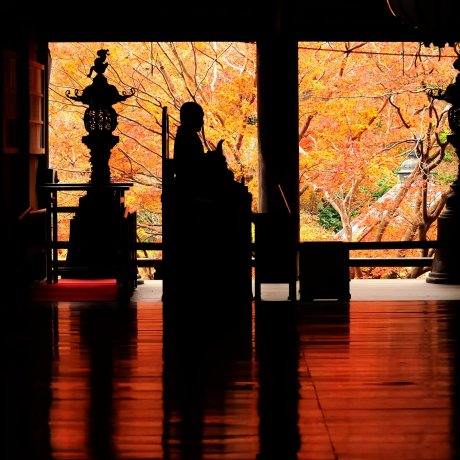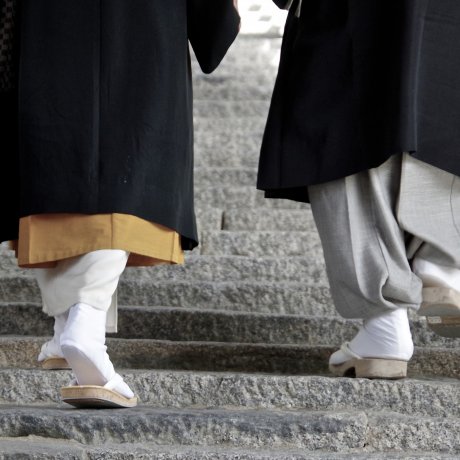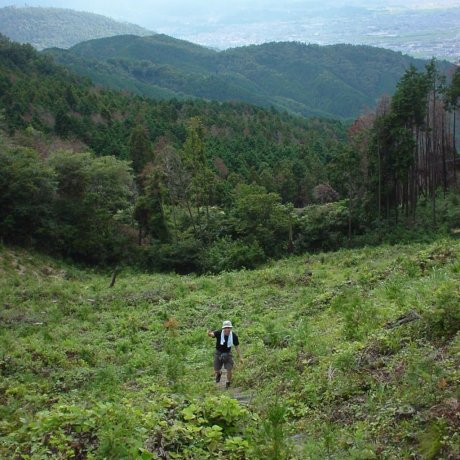 11
11
Red Maple Carpet at a Flower Temple
Takako SakamotoHase-dera Temple in Nara, also called 'The Temple of Flowers', is famous for its beautiful autumn foliage along with peonies..

Hasedera Temple, not to be confused with Kamakura’s temple of the same name, is located southeast of Nara City and renowned for its alluring scenery. The temple was built in 686 and, today, is the main temple of the Buzan sect of Shingon Buddhism. The sprawling complex of more than 30 buildings decorates the mountainside of northern Nara and is complemented year-round by natural beauty. In fact, Hasedera’s display of stunning flowers and foliage have earned it the nickname the Temple of Flowers. Spend hours strolling through the expansive complex and immerse yourself in the healing qualities of nature and tradition.
Start your cultural journey before even entering Hasedera at the small temple town located at its base. These lively streets are filled with shops and restaurants selling a variety of traditional wares and treats that are sure to brighten your walk. Past the quaint town stands Niomon Gate, the entrance to the temple. This massive structure houses two guardian deities and exudes a welcoming, yet commanding presence. Listed below are Hasedera's top sights:
Just beyond Niomon Gate is the Staircase Corridor. Follow the 200-meter long, nearly 400-step staircase up to Hasedera’s main hall at the top of the mountain. The ancient steps are covered by a wooden roof and decorated by stone lanterns, all of which blend harmoniously with the surrounding scenery. Famously, from mid-April to early May, the staircase is flanked by thousands of multicolored peonies.
Without a doubt, the temple’s most visited building is the main hall. This huge, traditionally designed hall epitomizes serenity with a facade that overlooks the lush mountainside. Stand on the main hall’s front wooden deck and observe gardens, a five story pagoda, libraries, living quarters for monks, and even the monks themselves walking among the temple buildings. Take a moment to breathe in the fresh mountain air. You may even be fortunate enough to hear chanting priests on the passing breeze.
The main hall also holds the temple’s principal object of worship—an eleven-faced Kannon statue. Standing at 12 meters tall, it is one of the largest wooden statues of the Goddess of Mercy in Japan. In the early-8th century, a monk is said to have carved two identical statues from a sacred camphor tree near Hase Village. One statue was enshrined at Nara, while the other was cast into the ocean to bring good fortune to people elsewhere. This second statue washed ashore in Kamakura and is now housed in that city’s Hasedera Temple. Visitors are permitted to touch Nara’s Kannon statue in spring and autumn.
The ethereal ambience of Hasedera’s traditional grounds are made more remarkable by the everpresent natural beauty. In spring and summer the grounds blossom with peonies, cherry blossoms, rhododendrons, and hydrangea. Then in autumn, the surrounding foliage turns vibrant red, creating an equally beautiful scene.
Hasedera is about a 15-minute walk from Hasedera Station.
 11
11
Hase-dera Temple in Nara, also called 'The Temple of Flowers', is famous for its beautiful autumn foliage along with peonies..
 15
15
Peony Gardens in Hase-dera, Nara: I enjoyed each of the Nobori-ro Corridors 399 steps that invited me up, up, up into the holy precincts...

NARA: Miracle-working Kannon at Hase-dera Temple was popular among rich nobles 1000 years ago. Praying here was popular among ..

As Nara prefecture is largely a mountainous region it’s no surprise that it’s much different from the hustle and bustle of the..

A 130-year-old soy sauce warehouse in the Japanese ancient capital of Nara has been given a second life as a hotel. It offers guests..


The summit of Mt. Ryūō is difficult to reach, but well worth the hike. It is often billed as a Health Trail.


Short presentation of the Yamato region, scenery of Japan's ancient legends and myths.
Your feedback has been sent.